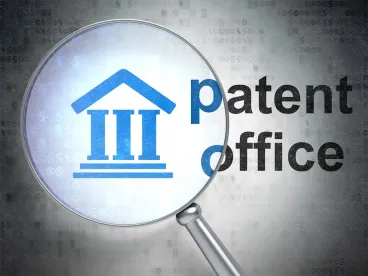A recent decision in the Eastern District of Texas should provide standard-essential patent (“SEP”) owners with more clarity and optimism when negotiating SEP licenses. Coming on the heels of Judge Koh’s decision in the FTC’s dispute with Qualcomm, Judge Gilstrap found Ericsson to have satisfied its fair, reasonable and non-discriminatory (“FRAND”) obligations when negotiating with HTC due in large part to a finding that it had negotiated in good faith. The decision, which is based on evidence that more accurately reflects the behavior of SEP licensors in their normal course of business, is beneficial to SEP owners because it expands the scope of what may constitute compliance with FRAND obligations and rejects the notion that the smallest-saleable patent practicing unit (“SSPPU”) sets the boundaries for determining a royalty base. The decision is also notable because what constituted a FRAND license was determined by reference to actual licenses entered into by the parties, rather than more academic theories used in litigation, such as royalty stacking. As SEP owners continue to consider whether participation in standard setting organizations inhibits their ability to assert intellectual property rights, this decision may dispel that notion as it expands the scope of how one can comply with FRAND obligations in order to receive compensation for contributions to technology standards.
Background
Ericsson, a member of the ETSI standard setting group, owns 2G, 3G, and 4G SEPs. These assets cover technology that is essential for devices to connect with each other over wireless networks. Ericsson filed declarations with ETSI that it would license them on FRAND terms. Ericsson and HTC entered cross-license agreements on their SEPs in 2003, 2008 and 2014. The last license expired in 2016 and the parties reached an impasse in negotiating a renewed license. In December 2016, Ericsson offered a license at a rate of $2.50 per 4G device. HTC rejected that offer and counter-offered $0.10 per 4G device. Ericsson countered with a new license offer at 1% the net price of HTC’s end product device with a $1 floor and a $4 cap.
HTC rejected Ericsson’s offers, and filed suit alleging that Ericsson breached its commitment to license its SEPs on FRAND terms. Ericsson counterclaimed for a declaration that Ericsson had complied with its FRAND commitment. A jury trial was held on HTC’s claim and the jury determined that HTC had not shown that Ericsson had breached its FRAND commitment. Judge Gilstrap then considered Ericsson’s claim seeking a declaration that it complied with its FRAND commitment.
Decision
The Court began its discussion by stating that, to satisfy ETSI’s FRAND obligations, a SEP-owner must either (1) offer a FRAND license, or (2) negotiate in good faith towards a FRAND license. Importantly, this means that, to satisfy its FRAND obligations, a SEP owner does not need to formally offer a FRAND license or justify—with complicated calculations in subsequent litigation—how its previous offers fell within the boundaries of a FRAND rate. Instead, negotiating a SEP license in good faith, alone, can serve to discharge a FRAND obligation. Using this as a guide, the Court drew two major conclusions: (1) it dismissed HTC’s claims that the royalty base should be determined from the profit margin of a baseband processor, which it argued was the SSPPU, and (2) it found that reviewing comparable licenses with other manufacturers was the best approach to take in determining the value of the company’s SEPs. As discussed below, both of these conclusions are beneficial to SEP owners.
SSPPU Analysis
HTC’s primary assertion in support of its breach of FRAND claim was that Ericsson should have based its royalty calculation on the profit margin of the SSPPU contained in a cellular device, which HTC submitted was the baseband processor. This SSPPU methodology has been used in other cases to greatly harm patentees. If followed, the SSPPU method generally states that a hypothetical royalty will not be applied to the actual commercial product sold (e.g., a smartphone priced at $800 - $1,200); rather, it is applied to the smallest saleable patent practicing unit (e.g., a modem chip priced at approximately $20). HTC argued this was necessary to filter out features not related to wireless cellular connection (i.e., 2G, 3G, and 4G). HTC took the analysis one step further and argued that the royalty should be derived from the profit margin—not the price or cost—of the SSPPU. Ericsson disagreed and presented testimony that the profit margin that a component supplier makes is not necessarily reflective of the value of the intellectual property embodied in that component. Specifically, Ericsson proved that consumers are willing to pay more than $100 to add cellular functionality to regular Wi-Fi enabled tablets.
The Court flatly rejected HTC’s assertion that the royalty calculation should be based on the profit margin of the SSPPU, or that such a calculation is required by ETSI in the first place. Instead, the Court agreed with Ericsson, finding that the market-based evidence shows that customers value cellular technology more highly than HTC suggested. This conclusion is beneficial to SEP owners because it expands the potential royalty base for standard-essential technology beyond the profit margin of a SSPPU to a market-based valuation of the standard-essential technology. Put another way, SEP owners can seek higher licensing rates—if consumer data supports it—for their contribution to customer-valued technology, while still complying with FRAND obligations.
Comparable License Analysis
In addition to the SSPPU analysis, the parties presented evidence related to Ericsson’s comparable licenses. Ericsson argued that comparable licenses offered the best evidence of the value of its cellular SEPs. This competes with previous court decisions, such as Microsoft Corp. v. Motorola, Inc., that bounded royalties by the profit margin of commercial products implementing the SEP technology and further reducing that value through royalty stacking. The Court, however, agreed with Ericsson, finding that the comparable licenses provide the best market-based evidence of the value of Ericsson’s SEPs and that Ericsson’s reliance on comparable licenses is a reliable method of establishing fair and reasonable royalty rates consistent with FRAND commitments. This conclusion is helpful to SEP owners as it allows them to rely on their good-faith negotiations, alone, to demonstrate they have complied with FRAND obligations.
Despite the finding, Ericsson and HTC presented competing interpretations of Ericsson’s various licenses. This is because many of comparable licenses included terms, such as cross-license provisions and lump sum payments, which required economic analysis for conversion into a resultant, effective, one-way royalty rate. Ultimately, the Court found the terms resulted in royalty rates ranging from 1-3% of the net selling price of 4G handsets with payment caps of $1.00 - $5.00 per device. The conclusion that the varying ranges comply with FRAND negotiating requirements is logical because not every cross-license encompasses patents having identical value. Instead, for a potential cross-licensing agreement with no other benefits being contemplated, determining the appropriate rate for Ericsson to offer would require some valuation of the patents to which Ericsson was receiving a cross-license. Conceptually, the more valuable the patents to which Ericsson received a cross-license, the lower the rate Ericsson would offer for a license to its SEPs. Based on this notion, the Court found that Ericsson complied with its FRAND commitment. This permits Ericsson (or SEP owners, generally) to offer different rates to different companies while still complying with FRAND obligations. The conclusion is another win for SEP owners because it gives them latitude to negotiate cross-license agreements—resulting in different royalty rates—based on the unique patents at issue instead of trying to fit every licensing agreement into a rigidly prescribed range of FRAND rates.
Conclusion
As 5G mobile technology rolls out and its inevitable licensing looms on the horizon, SEP owners should continue to monitor the evolving procedures for licensing in compliance with FRAND obligations. This decision, if affirmed, would provide SEP owners with clarity and optimism when negotiating SEP licenses. First, the decision rejected the SSPPU rule, finding that ETSI does not even require it to satisfy FRAND obligations. Second, the decision determined that negotiating in good faith (proven by review of comparable licenses), rather than proving—through complicated analysis during litigation—satisfies FRAND obligations. The cumulative effect of these conclusions allows SEP owners to (1) seek higher licensing rates—if market data supports such a demand—for their contribution to customer-valued technology, and (2) offer different rates for a license to their SEPs based on the value they may receive from cross-licensing another companies’ patents. In further benefit to SEP owners, the decision is underpinned by the practical behavior of sophisticated SEP licensors, instead of deferring to complicated litigation-based theories for valuing SEPs as has become customary. If other courts follow this decision, SEP owners should have an easier and more flexible time when negotiating SEP licenses without having to diverge from their customary licensing practices.







 />i
/>i
